Interior Design Styles
Choose the style that reflects your taste
(Modern Style)
The modern style is one of the most essential interior design approaches. It is defined by simplicity, elegance, and a sense of spaciousness, calm, and warmth. Light and neutral colors dominate this aesthetic, making it especially suitable for smaller spaces.
This style features smooth-surfaced furniture with clean, straight edges. Wall art is typically frameless, and the overall look is minimal — nearly free of accessories, ornamentation, or elaborate details. Materials are often limited to natural elements like metal, stone, and both transparent and opaque glass, creating a clean and timeless atmosphere.
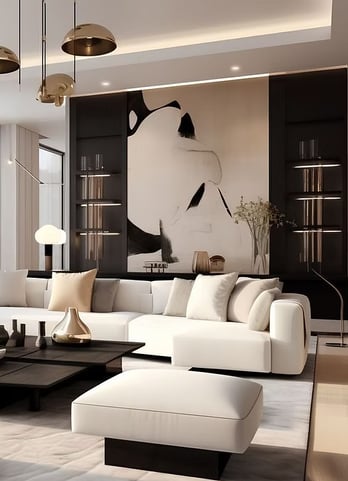

(Contemporary style)
The contemporary style shares many similarities with the modern style — both emphasize simplicity and sharp, clean lines. However, they are not the same. Contemporary interiors are known for their use of bold colors and vibrant accents.
The furniture often features colorful cotton, linen, or silk fabrics, while the materials used — such as parquet wood flooring, metal, and stone — contribute to a sense of openness. This makes the style especially suitable for spaces with high ceilings, such as modern homes and offices.
Natural light plays a central role in contemporary design, with an emphasis on maximizing window exposure and minimizing coverage. Additionally, it incorporates more decorative accessories than the modern style, adding character and richness without overwhelming the space.
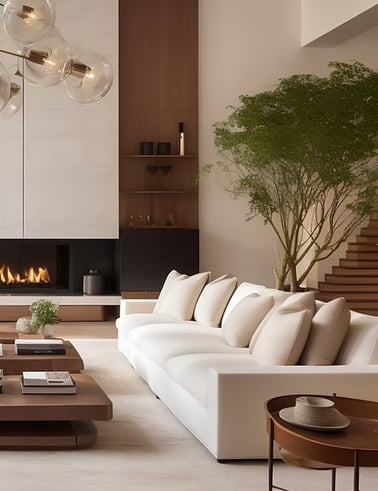

(Classic Style)
The classic style is one of the most prominent approaches in interior design, often used in palaces and grand residences for the luxurious and refined atmosphere it creates. This style is rich in detail, filled with ornate and valuable accessories, and characterized by deep, bold colors such as gold, green, black, red, and blue.
A fireplace is typically a central focal point in classic living rooms, with furniture elements arranged symmetrically around it. Symmetry is a key principle in classic interiors — if the room were split in half, each side would mirror the other.
The furniture used in this style is large, lavish, and full of gilded carvings and intricate detailing, matched with plush velvet fabrics and regal drapes that are layered and pleated for a majestic effect.
Expensive wood types are commonly used, and ceilings are typically high with multiple levels and detailed cornices. Lighting features include chandeliers, spotlights, and generous use of natural light. Flooring materials range from wood and marble to porcelain and stone, all selected to emphasize elegance and grandeur.
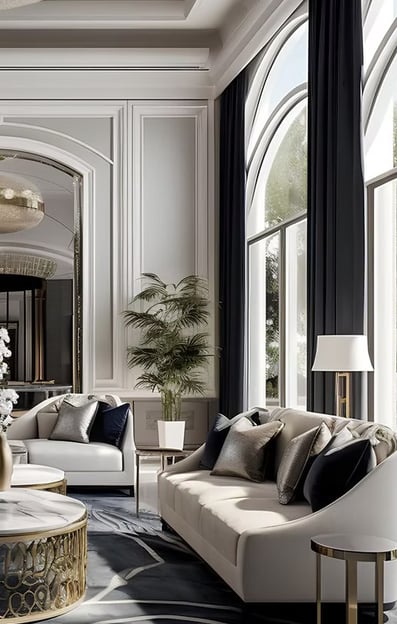

(Neo classic Style)
The neo-classic style is a highly sought-after interior design approach that harmoniously blends traditional elegance with modern simplicity. It combines contemporary colors and clean décor with luxurious classical touches — such as gold accents, strong lighting, and soft, uplifting wall tones, all balanced by neutral elements.
Furniture colors are derived from earthy tones like beige, brown, and cream, paired with dark and light wood finishes — steering away from loud or overly bold colors. Accessories and decorative elements are used sparingly to complement the neutral color scheme, ensuring a refined, balanced aesthetic that radiates understated sophistication.
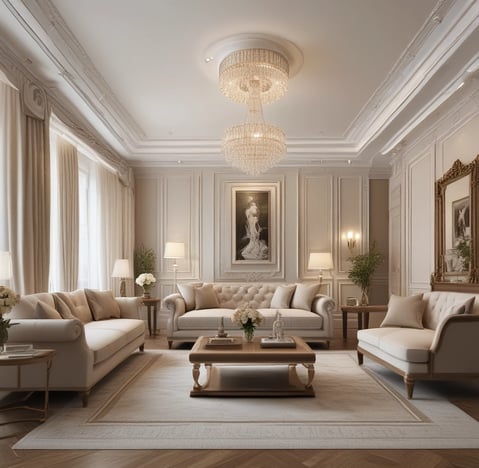

(Minimalist Style)
The minimal style simplifies modern design to its purest form, focusing on clean lines and intentional simplicity. Its core idea is to maintain clarity and openness in every corner, making it ideal for small spaces by using light, neutral colors, streamlined furniture, and minimal accessories.
It also emphasizes multi-functional furniture pieces to reduce visual clutter and maximize usable space, offering a calm and spacious living environment.
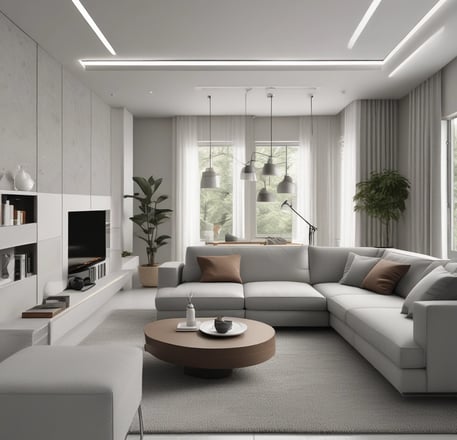

(Art Deco Style)
Art Deco blends bold geometry with modern richness, using curved lines, striking shapes, and luxurious natural materials. Its designs feature stainless metals, colored glass, wood, velvet, leather, silk, and glossy finishes.
Furniture is free of wooden carvings but often upholstered with lustrous velvet and defined by bold curves. The style incorporates reflective accessories like mirrors, shiny surfaces, and occasional golden accents inspired by classical elegance — creating a glamorous, sophisticated ambiance.
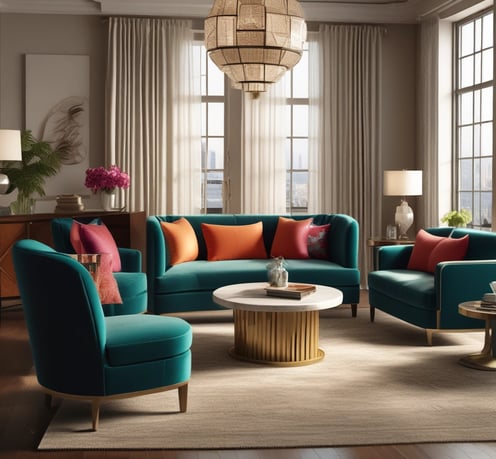

(Art Nouveau Style)
Closely related to Art Deco, Art Nouveau features ornamental details with a softer, more organic aesthetic. It replaces rigid geometry with flowing lines and elegant curves inspired by nature, such as florals and vines.
Door and window frames, as well as furniture, are characterized by smooth, curved edges. Lighting often includes hand-blown glass or gemstone elements, alongside stained glass windows, decorative iron fixtures, and intricately designed stair railings — creating a romantic and artistic atmosphere.
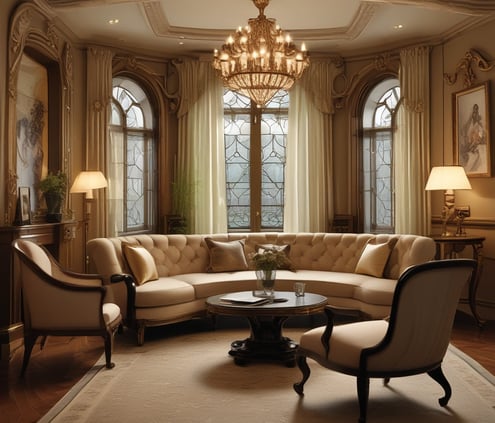

(Industrial Style)
Industrial design embraces raw textures and bold character, inspired by the transformation of old factories and warehouses into livable spaces. It features exposed pipes, ducts, and electrical conduits, with unfinished walls of brick or concrete.
High ceilings with aged wood beams, hanging metal lights, and a palette of neutral tones define its atmosphere. The style often includes oversized wall art, vintage antiques, and textiles with subtle patterns — creating a rugged yet artistic environment.
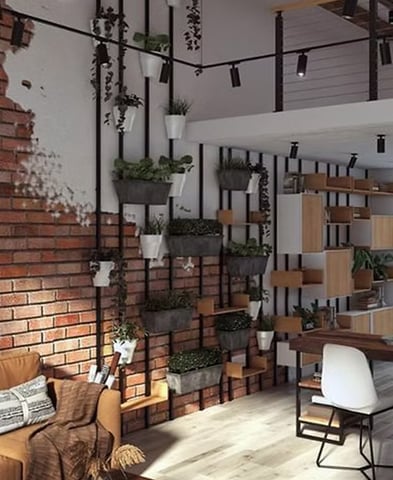

(Andalusian Style)
The Islamic style is known for its intricate wood carvings, often seen in doors and windows (mashrabiya), casting beautiful light patterns into the space. Arched forms inspired by mosque mihrabs, decorative domes with hidden lighting, and colorful stained glass add spiritual and visual richness.
Warm and neutral tones dominate the palette, complemented by ornate brass accessories, traditional hanging lights, and classic furniture featuring Andalusian or Islamic motifs — blending cultural depth with timeless elegance.
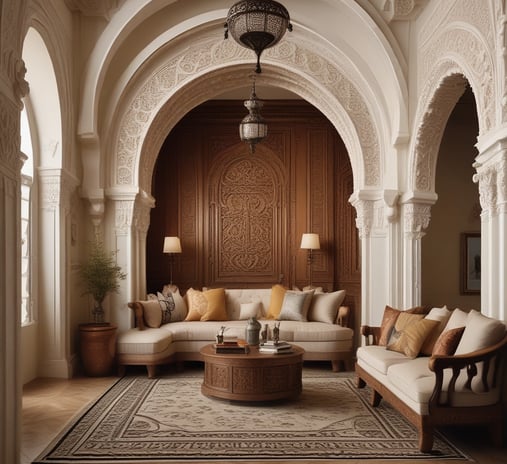

(Arabic Style)
The Arabic style is rich in ornate detail and filled with luxurious furnishings. It features intricate patterns, flowing window drapes, and lavish silk and velvet fabrics. Metal lanterns, traditional lamps, and carved decor pieces are common, along with mosaic designs often found in carpets, curtains, and wallpapers to enhance the visual richness.
The color scheme blends soft neutrals with bold, warm tones like red, yellow, and orange — as well as decorative accents in turquoise, gold, silver, and emerald green. Signature elements include Persian rugs, detailed prints, layered curtains, traditional chandeliers, silky fabrics, and a generous array of cushions that offer both comfort and style.
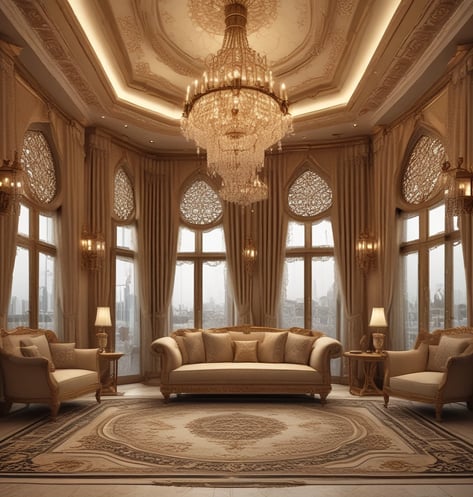

(Bohemian Style)
The bohemian style offers complete freedom in decorating — with no strict rules or structured design lines. It embraces intentional chaos, mixing vintage and modern pieces, classic and contemporary accessories, and both patterned and plain fabrics.
Bold, expressive colors are used liberally to create a warm and intimate atmosphere. Materials vary widely, from fabric and leather to wood and anything that reflects your personal taste. The result is a layered, cozy, and highly personal space filled with visual richness and individuality.
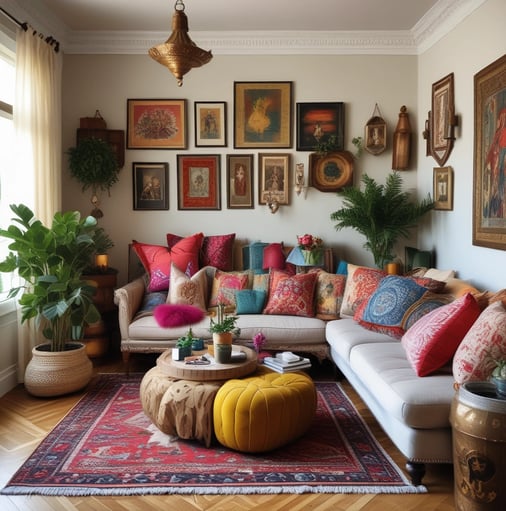

(Scandinavian Style)
Scandinavian design is known for creating bright, airy spaces through large uncovered windows that maximize natural light. It embraces simplicity, using soft colors, clean lines, and natural elements.
White dominates walls and floors, while materials like wood, matte-finished aluminum, or simple plastics are used in understated, cost-effective ways. Accessories are minimal, and each element — though simple — is thoughtfully placed, giving the space an artistic yet uncluttered feel.
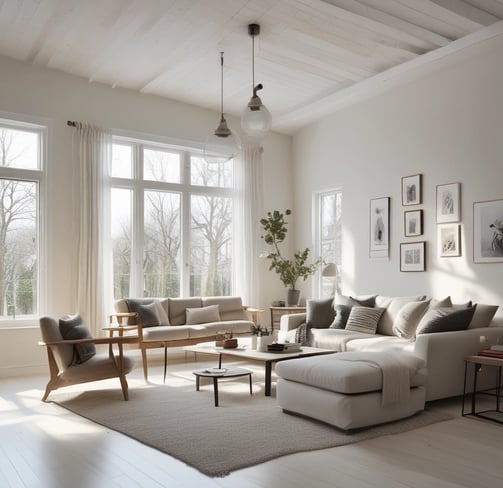

(MID – Century Modern Style)
This style blends vintage designs from the 1960s to the mid-1990s, incorporating elements of minimalism and freedom from strict design rules. It features clean, organic forms, a focus on functionality, and a palette dominated by neutral tones.
Emphasizing original retro pieces, this style is visually calm, practical, and easy to live with — offering timeless simplicity and understated elegance.
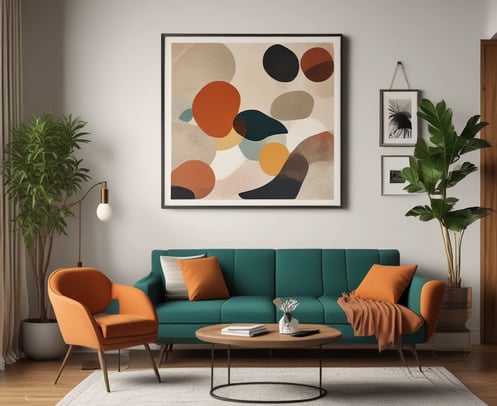

(Coastal Or Hamptons Style)
Inspired by seaside living, this style evokes freshness, balance, and natural harmony. It features a palette of soft neutrals like white and beige, with touches of blue to reflect the sea.
Furniture is crafted from natural materials like bamboo and linen for comfort and lightness, while sheer, breezy curtains allow gentle airflow. Green plants and accessories in earthy tones enhance the relaxed, nature-connected atmosphere.
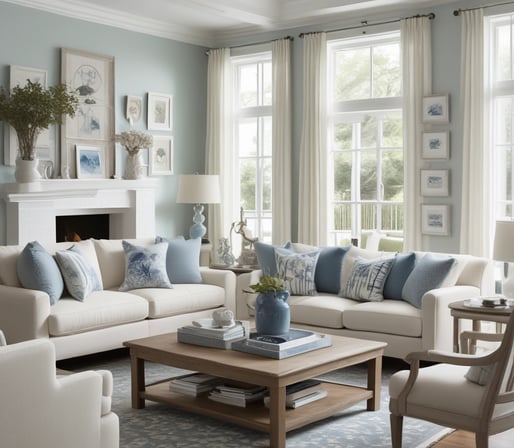

(French Country Style)
A soft and charming interior style that combines rustic elegance with warmth. It features muted shades of red, yellow, and gold alongside gentle neutrals.
Natural materials like stone, brick, and carved wood are commonly used, while accessories often include ornate ceramics and bold, traditional lines — creating a cozy and timeless countryside atmosphere.
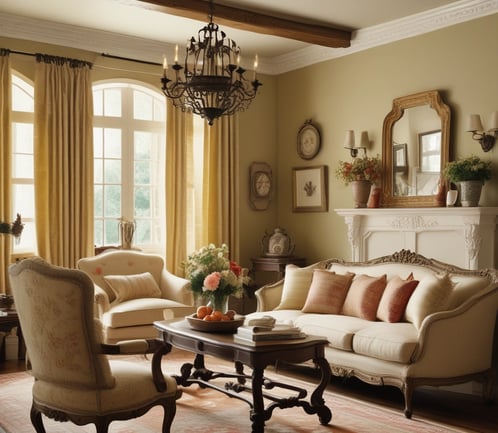

(Rustic Style)
Inspired by nature, the rustic style is defined by simplicity and raw, handcrafted elements. It features natural materials like wood, leather, animal hides, burlap, stone, and even antler or horn accents.
The color palette draws from earthy tones — greens, browns, and warm neutrals — softened by hanging glass or metal lighting to add warmth and contrast.
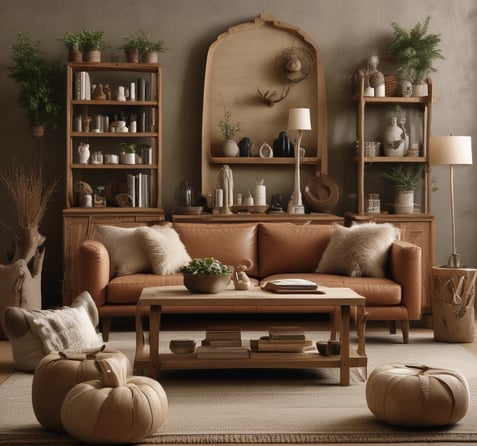

(Shabby Chic Style)
A vintage-inspired interior style that’s softer and more delicate than bohemian, defined by its use of heirloom furniture and antique pieces passed down through generations.
The palette is light and calming — featuring creamy tones and pastels, with coordinated patterns on fabrics and walls to create a romantic, time-worn charm.
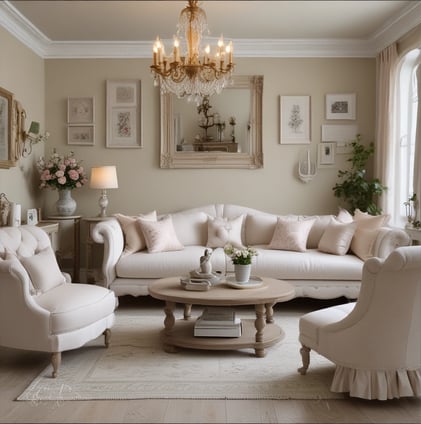

(Farmhouse Style)
Inspired by nature, the farmhouse style blends rustic charm with modern simplicity. It features natural wood, greenery, and a mix of materials like gold, nickel, black-painted metal, and wooden flooring.
The palette leans toward soft neutrals and earth tones, while spaces are open and minimally divided, with subtle artificial lighting that enhances the relaxed, homey atmosphere.
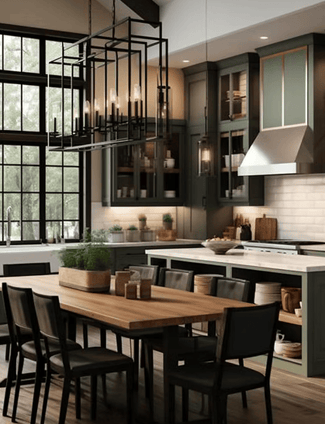

Oak Home Trading Company
Innovative and high-quality interior furniture and décor design & execution
© 2025 Oak Home Trading Co.
Enjoy our exclusive special offers
Follow us on social media


All rights reserved.
